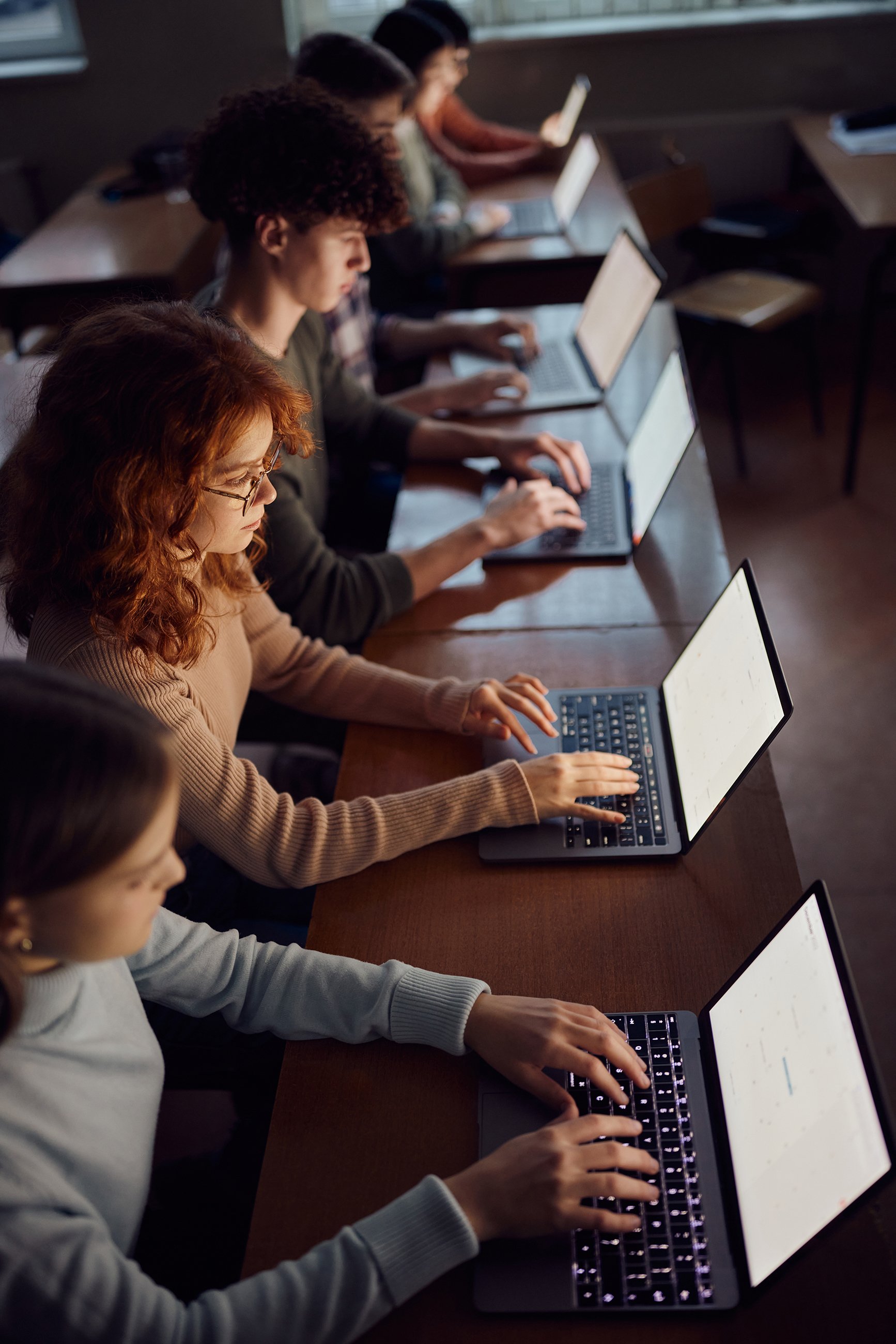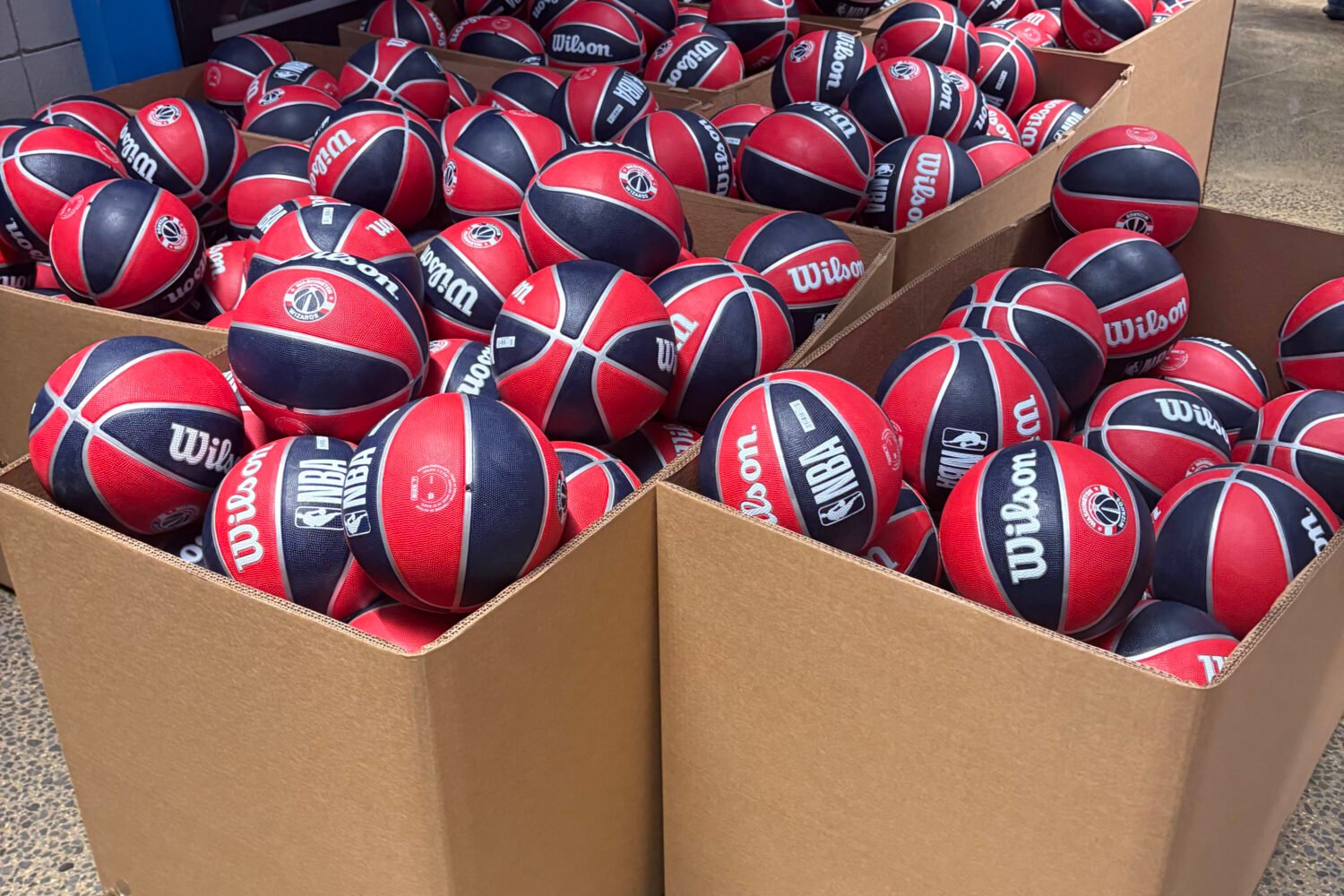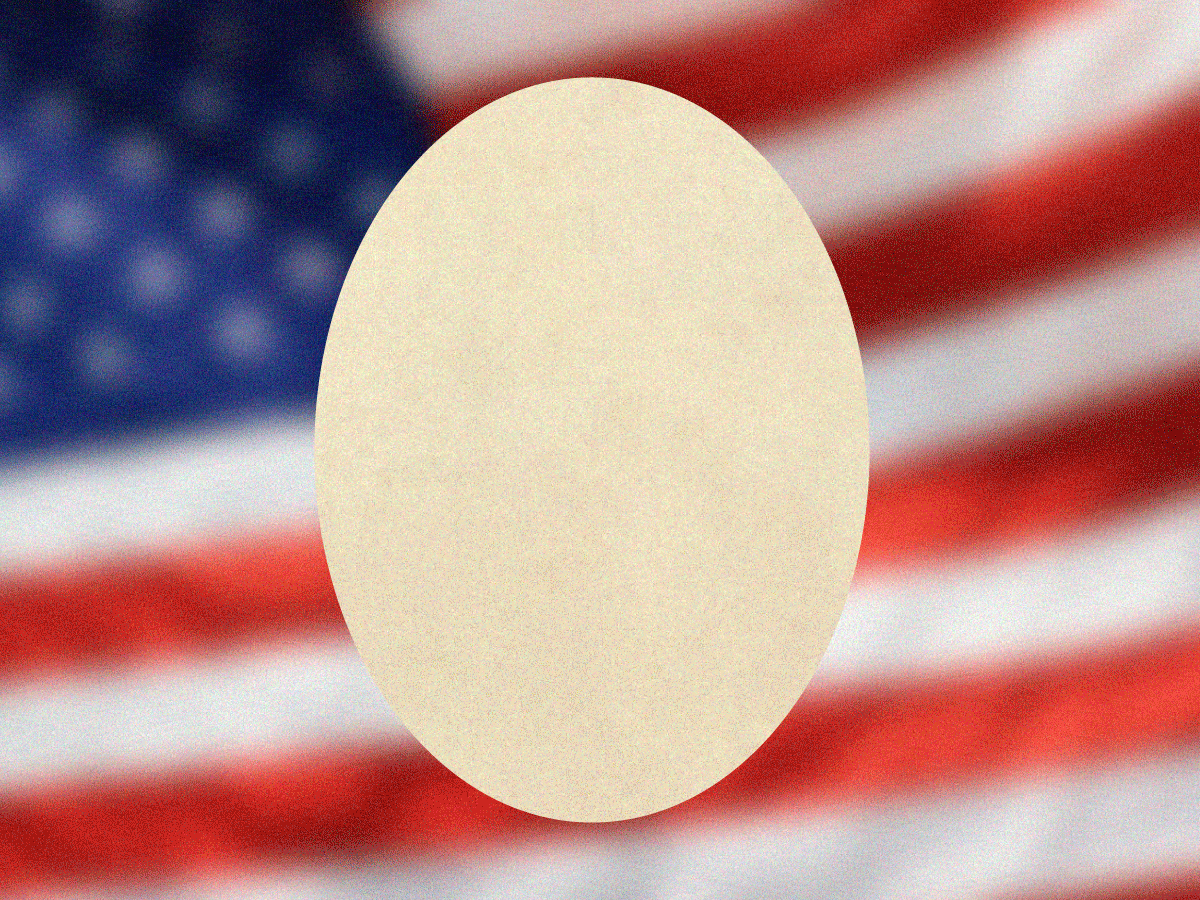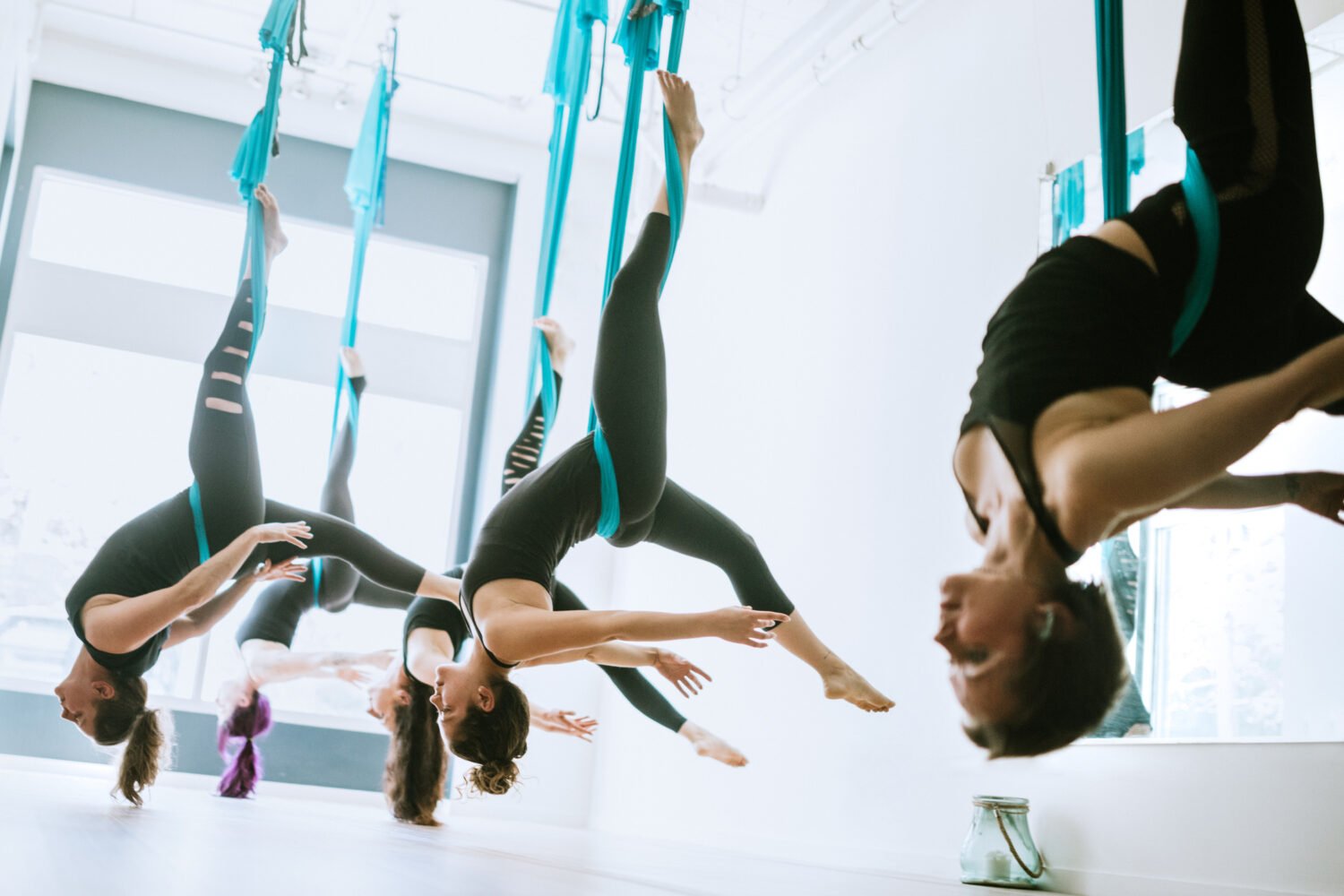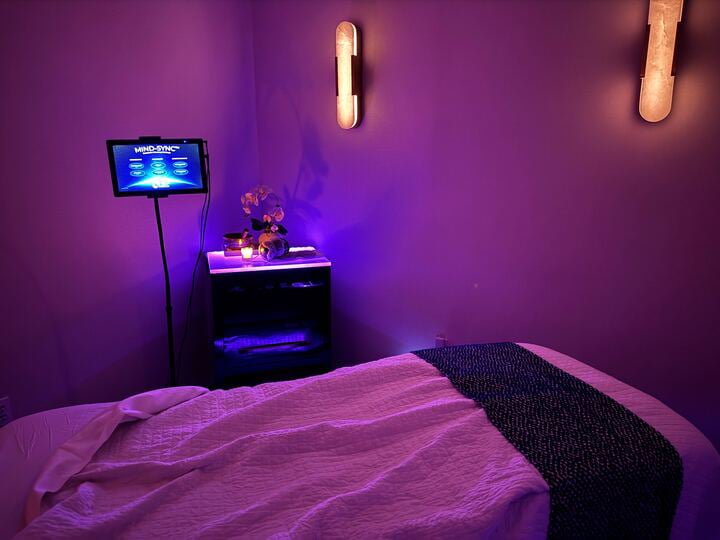When my son was in ninth grade, at a well-regarded DC public school, he spent his days guzzling entertainment. We did not send him to school with a phone—it was too distracting—but the school district provided him a laptop and insisted he have it all day. This meant he was almost always online. At the beginning of each class period, he’d open the computer, do some teen witchcraft to get around the school’s site-blocking and screen-monitoring software, then spend biology or Spanish watching TV shows and playing games. His teachers didn’t love it. But when they asked him to close the laptop, he often simply refused.
My son is not a natural student, and his issues with focus aren’t caused by screens. But the laptop exacerbated them. Sometimes, he couldn’t even tell me the general topic of a class. What was he studying in history? The Renaissance? The Industrial Revolution? The Vietnam War? He had no idea. With some regularity, he’d walk into class completely unaware that he had a test that day. Presumably, the teacher had told the students multiple times, had perhaps even reviewed the material with them, but he hadn’t paid enough attention to know. It made homework impossible. The assignments were straightforward, but they did assume he was conversant with whatever had happened in class.
Repeatedly, my husband and I begged the school to restrict his screen use, but administrators resisted, saying the laptop was integral to the curriculum. The concession we finally won was that our son’s teachers would take his laptop at the start of each period and return it to him only if he needed it. But enforcement was spotty, and from his browser history—whenever he forgot to delete it—we could see he still spent the majority of each day off-task. Finally, we started keeping the laptop at home. It meant our son couldn’t do some of his in-class assignments (math problems, online quizzes), but he hadn’t been doing them anyway. And without the computer, he was at least listening. His grades improved.
What if spending the school day on a laptop hurts weaker students without benefiting stronger ones? What if laptops are actually bad?
I’m telling you this because the DC public-school system seems poised to ban phones in class. Copious peer-reviewed research has shown that this is unambiguously the right thing to do to help kids learn, bolster their mental health, encourage healthy social development, and lessen school-based bullying and conflict. But if your child’s school takes their phone away, they’ll still be on a screen, probably multiple hours over the course of the day. That’s because DCPS’s policy is to issue each student a personal device (typically a laptop) starting in third grade. The region’s suburban districts have similar policies.
Tech boosters tend to frame universal laptop access as a victory for equity, ensuring that all children and teens—regardless of their means—are equipped with similar devices. The assumption is that distributing technology helps vulnerable students, but what if it does the reverse? What if spending the school day on a laptop hurts weaker students without benefiting stronger ones? What if laptops are actually bad?
In the aftermath of the pandemic, Brooke Pinto, who represents Ward 2 on the DC Council, noticed that the city’s young people seemed disengaged in school: Kids weren’t paying attention in class, their anxiety and depression were spiking, and physical fights were breaking out in hallways and lunchrooms across town. “From all of these different angles,” Pinto told me, “everything kept coming back to cellphones and how distracting our personal devices are.”
In January, Pinto introduced a bill mandating that every DC public school—from elementary through high school, including charters—must ban the use of cellphones and personal devices for the entire school day. (Some students with emergencies or disabilities will be exempt.) She hopes to pass the bill before the start of school this fall. “For our teachers,” she said, “the greatest commodity that they have is student attention, and the greatest hindrance to that attention is phones.”
The scientific literature backs Pinto up. Study after study has shown that phones in the classroom are a scourge. Smartphones have been devastating to adolescent mental health, and teachers struggle to hold students’ attention while competing with the entirety of the internet. Phones also inhibit kids’ social development. Between classes and at lunch, students tend to be buried in devices. It’s making them lonelier and increasing social anxiety. In schools that have banned phones, test scores tend to improve, but so does overall morale.
Pinto’s proposed ban applies only to personal devices—not school-issued tablets and laptops. That’s deliberate. Apparently, teachers told her that certain online platforms are helpful for learning; programs like DeltaMath, for example, can provide instantaneous feedback on assignments, explaining why particular math problems are wrong. There’s some evidence that specific digital tools (when used in sparing, targeted ways) can bolster student performance—but in general, studies do not show an overall educational benefit to providing students with tech.
“A lot of schools spend big money on tablets and laptops for their kids,” says Michael Hansen, a senior fellow at the Brookings Institution who studies education policy. “But by and large, we do not see any evidence that it makes much of a difference in educational outcomes.” He agrees that equity is important; when students don’t have laptops, it’s tougher to do homework, apply to colleges or jobs, and keep abreast of the news. But since the pandemic, the overwhelming majority of American schools—from elementary to high school—guarantee devices for every student. Now that tech access has become “effectively universal in most places,” Hansen says, “there’s a growing concern about managing that access”—about mitigating its unintentional harms.
The number-one issue is distraction. On a laptop, it’s frictionless to open a new tab and surf. One study found that college students with laptops were off-task 42 percent of the time. Another found 28 percent of in-class laptop time devoted to nonacademic pursuits. Multitasking taxes our attentional resources, hurting our ability to learn—and the scientific literature suggests that for students who succumb to distraction on their laptops, there’s an academic cost, generally measured by a drop in grades.
A lot of this research, it should be said, involves college students, who are not the same as children and teens. College students are adults with more fully developed brains, better able to focus and regulate their impulses. And they are, by definition, the type of students with the resources and ambition to move on to higher ed—a population one might expect to be more equipped to manage their tech. On the other hand, their laptop use tends to be less restricted; colleges don’t generally block websites or employ screen-monitoring software, which is standard for K–12.
That blocking software has limits. Kids are wily. They find workarounds. My son, for example, discovered that even if DCPS blocked most video streaming, he could still watch TV via the Wayback Machine. At one point, he figured out how to download Roblox onto his school-issued laptop and played it in class for days. Also, he spent a lot of time messing around on non-blocked websites that weren’t relevant to his learning. But let’s speculate that a K–12 student is fully on-task 100 percent of the time—even then, the laptop can hurt her grades.
A study of middle-schoolers, for example, found that reading on a laptop resulted in poorer comprehension than reading on paper. (In ninth grade, my son had multiple virtual textbooks, and his English class assigned PDFs of novels.) Additionally, a 2014 study suggests that note-taking is less effective on a laptop than by hand. When a student types a teacher’s words verbatim, it doesn’t require processing the material. But researchers believe that longhand note-taking makes students synthesize information—they must paraphrase, distill, and select the most important points. This seems to result in better comprehension and long-term memory of the class.
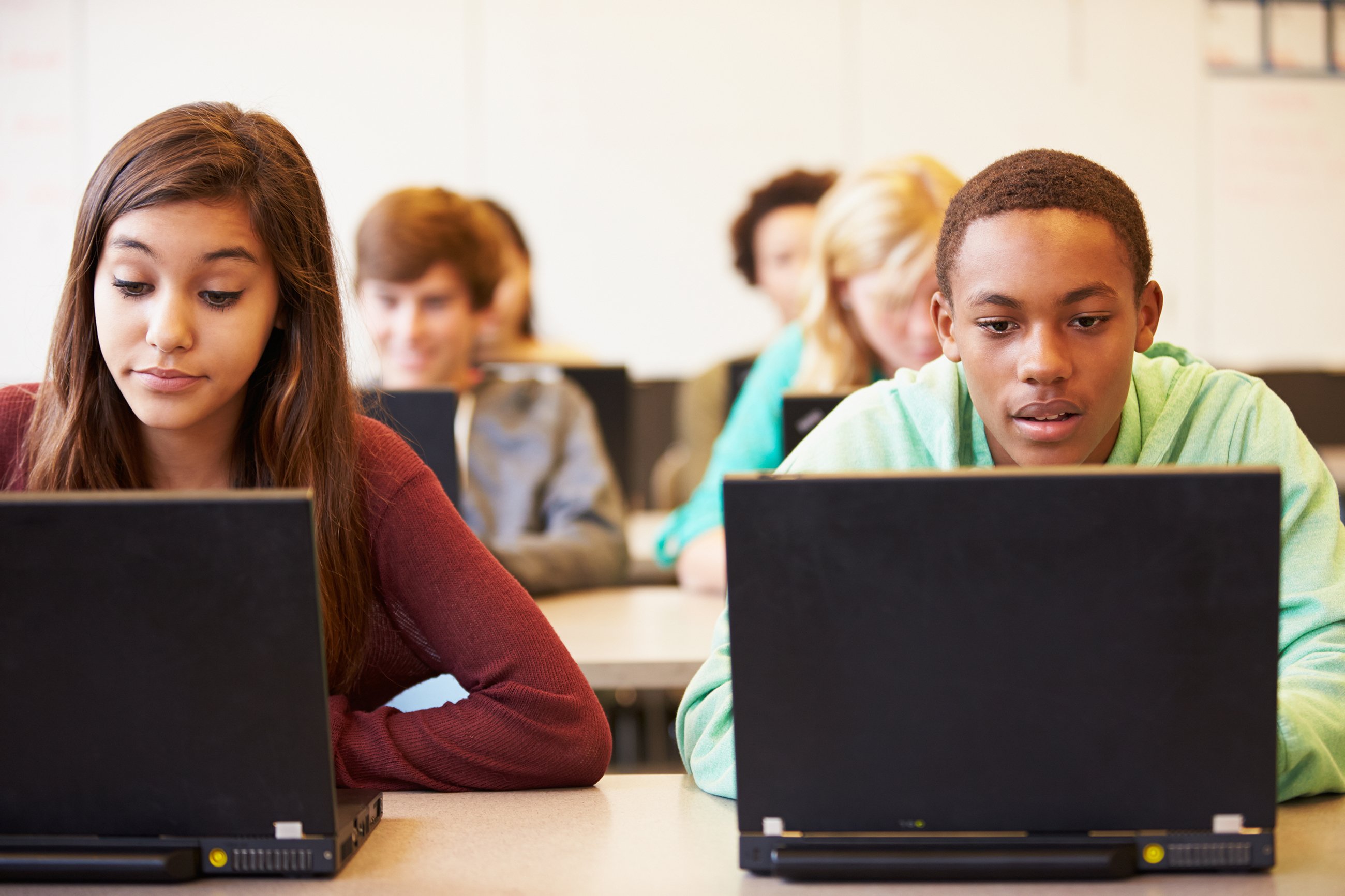
DCPS declined an interview request for this story but provided a statement essentially trumpeting its efforts to get laptops into students’ hands. “Technology is a through line to ensuring our students succeed academically, feel connected to their school, and are prepared for what’s next,” the spokesperson wrote, mentioning “historic investments that will help provide our scholars with access to devices aimed at supplementing their in-classroom learning in an evolving digital landscape.” DCPS did not deny that its students spend significant time on screens, although the district argued that tech is beneficial: “Aligned with peer-reviewed studies and pediatric health research, DCPS educators combine offline and online teaching throughout the day, and technology is leveraged to enhance the educational experience.”
But over and over in the scientific literature, researchers find little to no academic benefit from on-task laptop use and a significant cost when students are distracted. “Collectively, these findings raise questions about whether students should be generally encouraged to bring their laptops to class” was one paper’s understated verdict. Another was more blunt: “Our results indicate that students perform worse when computers are available.” Yet each year, DCPS spends several million dollars purchasing and maintaining laptops and distributing them to kids as young as eight.
Maybe you’re thinking, “My child does fine with the laptop. Her grades are good, she’s learning in class.” That’s totally plausible, because there’s another wrinkle to this story: When studies of laptops filter the results by demographic, the better students tend not to be affected. There seems to be no benefit, and no cost, to having the screen in class. Presumably, that’s related to what makes those students successful in the first place. They’re well regulated, self-disciplined, and able to corral their focus. I hope that describes your kid.
But laptops seem to hurt the worst-performing students most—particularly boys, whose impulse control tends to lag girls’. A 2016 study found that “permitting computers is more detrimental to male students than female students” and that stronger students saw fewer adverse effects from screens. Another study arrived at a similar result, concluding that “the negative effect of computer use is strongest among male students and driven by weaker students as identified by their cumulative GPA.”
Smartphones also seem most harmful for kids at the bottom of the class. A 2016 study, for example, found that when some UK high schools banned phones, the positive effects were “concentrated in the lowest-achieving students.” The social psychologist Jonathan Haidt discussed this in his recent book about the toll of smartphones on kids, noting that the bottom quartile of students—whose scores tend to drop most when they’re on screens—are “disproportionately from lower-income households, with Black and Latino students overrepresented.” Tech, he writes, may be “exacerbating educational inequality by both social class and race.”
And yet many school districts continue to frame universal laptop access as a boon to equity, a way to help the least advantaged students succeed. But my son represents an important and vulnerable population that DCPS serves. Before we adopted him, his circumstances were rough: He was hungry, periodically unhoused, moving between foster homes, unable to devote his attention to school. Often, that kind of childhood is associated with disorders that make kids more impulsive and distractible, such as ADHD and PTSD. Students with trauma—ones who didn’t get a good breakfast, who worry about violence at home—tend to be cognitively less capable of resisting the screen.
Sometimes I contemplate, with a caustic blend of despair and rage, that the whole job of some of the best-paid computer engineers on the planet is to maximize my son’s time on their platforms. Their goal is to colonize his consciousness, distract him from school, engulf his extracurricular time, and keep him away from family and sleep. Success, for them, is when he chooses to watch another video rather than write an essay or listen in class. Infamously, these Silicon Valley types often send their kids to Waldorf schools—a loose network of private schools that are extremely restrictive of screens.
My son now attends a Waldorf school, too. Within the first few days, I noticed a difference: He was learning. He was engaged. He came home asking astute questions about predestinarianism. He had taken longhand notes. Removing the laptop was only a piece of that transformation—the school is small, the teaching unusually hands-on—and his academic troubles aren’t all resolved. But he’s a junior now, and he has opinions on Dante and Chaucer. He’s involved in theater and sports. He recently explained to me—quite coherently—how electromagnetism works.
My son agreed that I could share his story, in part because he’s kind of upset. “I was never focused,” he recently recalled of his ninth-grade year. “I was always so zoned out. I felt so invested in the screen that it didn’t feel like anything else was real.” He actually does like to learn, he told me, and without devices he’s now vastly more engaged in school. Asked what a sensible tech policy might be for DCPS, he contemplated for a moment. “There needs to be a device that can only do the bare minimum,” he said—only a word processor, maybe a dictionary. He does not think there should be a way to get online.
This article appears in the March 2025 issue of Washingtonian.

